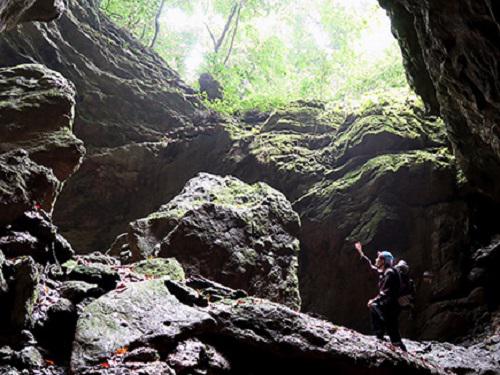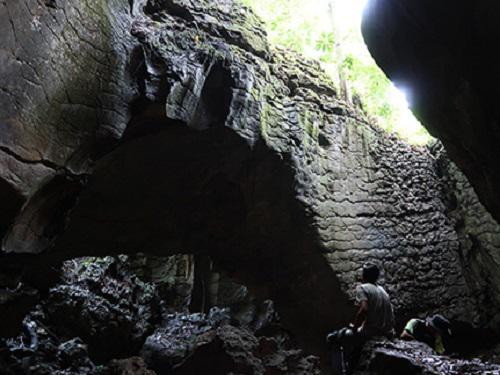Iva Njunjić
Other projects
The aim of this project is to locate and map caves, gather data on richness and endemism of cave snails and cave beetles to be applied in the conservation of these threatened ecosystems and in raising environmental awareness among the local community about cave fauna. All project activities will have an element of training and capacity building of the local community via the KOPEL program to empower the local community and ensure that the cave surveying techniques, data gathering, and ongoing monitoring can continue for long time to come.

Bod Tai cave.
Caves on the island of Borneo host a unique and highly diverse subterranean fauna. These cave-adapted organisms are particularly vulnerable and sensitive to environmental disturbance. Unfortunately, such disturbance is taking place: limestone hills in which these caves were formed are being removed because of land-use change or for limestone and marble extraction. Moreover, vandalism, poaching, and illegal harvesting of swiftlet nests have also been recorded in Lower Kinabatangan.

Inside the cave.
The aim of this project is to locate and map caves, gather data on richness and endemism of cave snails and cave beetles to be applied in the conservation of these threatened ecosystems and in raising environmental awareness among the local community about cave fauna. In the continuation of our work in this area, we are moving the focus of our project activities to the southeast - the area in the vicinity of Batu Puteh village. Raising environmental awareness among the local populations, through lectures, pamphlets and posters about these unique organisms and their habitats, will expand their knowledge about caves and evoke pre-existing love and reverence for caves. In addition, the results of this research and capacity building through collaboration with KOPEL will provide a basis for implementing the best management strategies for karst conservation in the tropics.